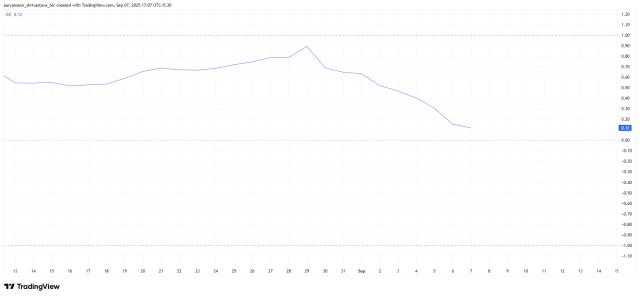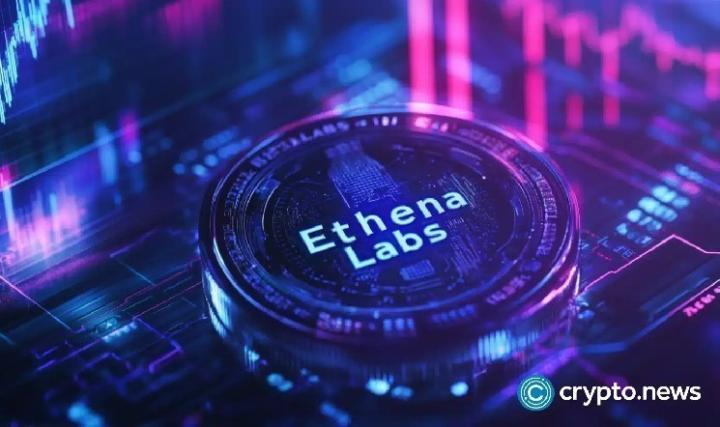"However, we must be clear-headed and realize that this only opens a door, and funds will not flow in overnight. In the short term, its effect on boosting market sentiment is greater than actual capital inflows. In the long term, its real value lies in the regulatory signal it sends: crypto assets are being considered in the most important wealth management system in the United States."
Author: Hao Yicheng
Cover: Photo by Weigler Godoy on Unsplash
On August 7, 2025, US President Donald Trump signed an executive order titled "Democratizing Access to Alternative Assets for 401(k) Investors." This order aims to provide all Americans participating in employer retirement plans with access to alternative asset investments similar to those enjoyed by institutional investors, including private equity, real estate, commodities, infrastructure projects, and digital assets (cryptocurrency). This initiative, which involves $12.5 trillion in retirement funds, could have far-reaching implications for markets such as cryptocurrencies, private equity, and real estate.
1. What is a 401(k)?
The 401(k) plan is a corporate retirement savings plan in the United States, named after Section 401(k) of the Internal Revenue Code. Its core mechanism is: employers provide contributions, employees participate voluntarily, and tax incentives are used to encourage retirement savings.
1. Basic Mechanism
Employer-provided: The company opens a 401(k) account for its employees.
Employee voluntary contributions: a certain percentage (e.g. 5%) is deducted from the salary and deposited into the account.
Tax benefits:
Traditional 401(k): Contributions are made before tax, but withdrawals are taxable upon retirement.
Roth 401(k): Contributions are made after tax and withdrawals are tax-free in retirement.
Employer matching: Many companies will subsidize a percentage of the amount employees contribute (for example, if the employee contributes 5%, the company matches 3%), which is one of the core attractions of the plan.
2. Investment Methods
Self-selection: The account holder decides what to invest the funds in the 401(k) account in from a list of options provided by the plan provider (usually including various funds, ETFs, bonds, etc.).
Deferred income: Investment income does not need to be taxed until retirement, allowing it to grow at a compounding rate.
3. Withdrawal Limits
You usually have to be at least 59.5 years old to be able to withdraw your funds freely. In addition to paying taxes, you may also face a 10% penalty for early withdrawals.
4. Mass and Materiality
By 2024, the total assets of US 401(k) plans will be between $8 trillion and $12 trillion, making them the most important retirement savings tool for Americans. The sheer volume of funds means that even the slightest change in investment policy can trigger significant market fluctuations.
2. Core Content of the Executive Order
1. Policy Objectives
- Unlock investment opportunities in alternative assets for ordinary Americans and narrow the gap between them and institutional investors in terms of investment channels and potential returns.
- Encourage employers and plan providers to include a wider range of investment options in 401(k) plans.
2. Types of assets involved
- Private Equity and Private Credit
- Real estate and infrastructure
- commodities
- Actively managed digital asset investment vehicles (e.g., cryptocurrency funds, crypto ETFs, etc.)
3. Regulatory arrangements
- Requires the Department of Labor (DOL) to provide "Safe Harbor" guidance to plan sponsors (employers) under the Employee Retirement Income Security Act (ERISA) framework to clarify the scope of their fiduciary responsibilities and reduce the litigation risks they face for providing alternative asset options.
- The U.S. Securities and Exchange Commission (SEC), the Treasury Department and other departments are required to evaluate and adjust the "qualified investor" threshold to open up compliant investment channels for ordinary retirement account investors.
- Encourage the market to develop investment products suitable for retirement accounts, such as target date funds, collective investment trusts (CITs), etc., to balance the risks and liquidity of alternative assets.
3. Impact on Cryptocurrencies
Analysis from three dimensions: funding, compliance and market sentiment:
1. Funding: Opening up the imagination space for long-term funds, but the inflow process is slow
- Theoretical Funding Pool : The total size of US 401(k) and other defined contribution retirement plans is approximately $12.5 trillion. In theory, even if only 1% of assets were allocated to crypto, it could bring in up to $125 billion in incremental funds.
- Inflows depend on multiple choices : It's important to understand that funds won't flow in automatically. The actual scale depends on employers' willingness to provide support , plan managers' willingness to launch products , and employees' proactive choice of allocations . This is a lengthy, multi-faceted process.
- Long-term holding attributes : 401(k) funds are extremely long-term and stable. Funds entering the crypto market are likely to become "patient capital", which helps reduce the overall selling pressure and volatility of the market.
- Landmark event : BlackRock has announced plans to launch the first crypto-related investment products for 401(k)s in 2026, which may become the catalyst for the first large-scale entry of crypto assets into US retirement accounts.
2. Compliance: Obtaining an institutionalized “entry permit”
- The executive order positively mentions "digital assets" in long-term retirement investment policy at the federal level for the first time, providing strong institutional endorsement for cryptocurrencies as a legitimate and configurable asset class.
- This move will greatly promote the compliance process of financial products related to crypto assets and clear the way for the SEC to subsequently approve more crypto ETFs or funds.
3. Market sentiment: a short-term boost and the cornerstone of long-term confidence
- In the short term, this news will become an important catalyst for market sentiment and may trigger a round of hype around "compliance" and "entry of institutional funds."
- In the long run, institutional acceptance will help enhance the trust of the entire market, attract more attention and entry from traditional investors, and promote the improvement of related infrastructure.
4. Opportunities and Challenges
1. Opportunities
- Huge potential capital inflow : It may reshape the funding structure of crypto assets and introduce more long-term, stable "patient capital".
- Promote deep integration with traditional finance : Make crypto assets take a key step from "alternative investment" to "mainstream asset allocation".
- Fostering compliance product innovation : creating a broad market space for asset management companies, custodian institutions and fintech companies.
2. Challenges
- Regulatory and legal complexity : Executive orders have limited legal force and are easily overturned, serving primarily as guidelines. True institutionalization requires Congress to amend fundamental laws such as ERISA. Until then, policy uncertainty remains.
- Strong resistance from fiduciary duties : Employers, as fiduciaries of 401(k) plans, are extremely sensitive to the introduction of highly volatile assets. To avoid legal action and administrative costs, they will be the final gatekeepers for crypto options into 401(k)s, and their acceptance may be very slow.
- Investor behavioral inertia and the education gap : Most 401(k) participants are not professional investors and tend to choose default low-risk portfolios (such as target-date funds) and rarely change them. Encouraging them to actively choose high-risk crypto assets requires large-scale and effective investor education.
- Product limitations : Crypto assets are generally subject to high volatility, complex valuations, and high transaction fees. Designing products that reflect market returns while meeting the risk control and low-cost requirements of retirement accounts is a core challenge for asset management companies.
5. Summary
From the Bitcoin Reserve Act, which was introduced in New Hampshire and Texas, to this federal executive order, the United States is gradually paving the way for crypto assets to integrate into the mainstream financial system. Trump's executive order is undoubtedly a milestone in the institutionalization and mainstreaming of cryptocurrencies.
However, we must clearly understand that this merely opens the door; capital won't flow in overnight. In the short term, its impact on market sentiment will outweigh actual capital inflows. In the long term, its true value lies in the regulatory signal it sends: crypto assets are being considered within the most important wealth management system in the United States .
The actual scale of future capital inflows will depend on the implementation of regulatory details, the availability of compliant products, employers' willingness to accept these products, and ultimately the choices of individual investors. The road ahead is still long, but the direction is clearer than ever.
Disclaimer: As a blockchain information platform, the articles published on this site solely reflect the personal views of the authors and guests and do not represent the position of Web3Caff. The information within these articles is for reference only and does not constitute any investment advice or offer. Please comply with the relevant laws and regulations of your country or region.
Welcome to join the Web3Caff official community : X (Twitter) account | Web3Caff Research X (Twitter) account | WeChat reader group | WeChat public account








